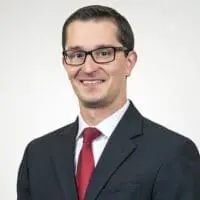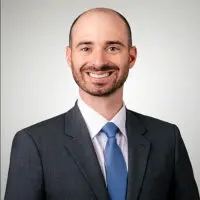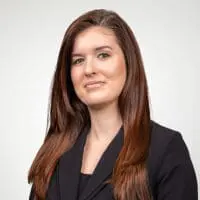SWIPLit
UPDATE: Supreme Court Revisits Patentable Subject Matter in Mayo Collaborative Services v. Prometheus Laboratories, Inc.
Through unanimous decision, the Supreme Court has provided further guidance concerning the scope of patentable subject matter with respect to claims which cover the application of natural laws. While laws of nature, natural phenomena, and abstract ideas are not patentable under 35 U.S.C. §101, an application of a law of nature to a known structure or process may be entitled to patent protection. However, to be entitled to protection, a claim must include additional features that provide assurance that the process is more than an effort to monopolize a law of nature. In Mayo, the Court reinforced that these additional features must be more than what is well-understood, routine, conventional activity, previously engaged in by those in the field.
In Mayo, the patents at issue concern the use of thiopurine drugs in the treatment of autoimmune diseases. When a patient ingests a thiopurine drug, the patient’s body metabolizes the drug, causing metabolites to form in his bloodstream. These metabolites may be measured to determine whether, for a particular patient, a given dose is so low as to be potentially ineffective, or so high as to risk harmful side effects. The claims of the patents-in-suit claimed a method for optimizing therapeutic efficacy for treatment of an immune-mediated gastrointestinal disorder. The method recites (1) an “administering” step which instructs a doctor to administer the drug to his patient, (2) a “determining” step, which tells a doctor to measure the resulting metabolite levels in the patient’s bloodstream, and (3) a “wherein” clause, which describes the metabolite concentrations above which there is a likelihood of harmful side-effects and below which it is likely that the drug dosage is ineffective, and states that levels above or below these thresholds indicate a need to decrease or increase the drug dosage.
Respondent, Prometheus Laboratories, Inc. (“Prometheus”) is the exclusive licensee of the patents-in-suit. Mayo Clinic Rochester and Mayo Collaborative Services (“Mayo”) developed a diagnostic test designed to measure the levels of metabolites in a patient’s bloodstream to determine toxicity for purposes of thiopurine dosage. Prometheus brought an action for patent infringement. The District Court granted summary judgment in favor of Mayo on Section 101 grounds. On appeal, the Federal Circuit reversed, relying on the machine or transformation test. Mayo filed a petition for certiorari, and the case was remanded to the Federal Circuit for further proceedings in light of this Court’s decision in Bilski v. Kappos, 561 U.S. ___, ___ (2010) which clarified that the “machine or transformation test” is not a definitive test of patent eligibility, but only an important and useful guidepost. On remand, the Federal Circuit reaffirmed its earlier conclusion. Mayo again filed a petition for certiorari, which the Court granted.
To analyze the patentability of the claims, the Supreme Court turned to Diamond v. Diehr, 450 U.S. 175, 185 (1981) and Parker v. Flook, 437 U.S. 584, 590 (1978), among other cases. The Court stated that while a process is not unpatentable simply because it makes use of a law of nature or mathematical algorithm, the application of the natural law must do more than simply provide instructions for its application. Slip. op. at 2-3. Furthermore, the Court’s precedents warn against interpreting patent statutes in ways that make patent eligibility depend simply on the particular drafting of a claim, and against upholding patents that claim processes too broadly, so as to preempt the use of a natural law. Flook, 437 U.S. at 593; O’Reilly v. Morse, 15 How. 62, 112-120 (1854); Gottshalk v. Benson, 409 U.S. 63, 71-72 (1972). It is also insufficient to limit the use of a formula or natural law to a particular technological environment. Diehr, 450 U.S. at 191-92. Instead, the precedent instructs that a process that focuses upon the use of a natural law should also contain other elements or a combination of elements, sometimes referred to as an “inventive concept,” sufficient to ensure that the patent in practice amounts to significantly more than a patent upon the natural law itself. Flook, at 594; Bilski, slip. op., at 14.
The Court found that the claims at issue in Mayo do not contain additional elements sufficient to ensure that the patent in practice amounts to significantly more than a patent upon the natural law itself. Specifically, the Court noted that beyond picking out the relevant audience, namely those who administer doses of thiopurine drugs, the claim simply tells doctors to: (1) measure (in a conventional manner) the current level of the relevant metabolite, (2) use particular (unpatentable) laws of nature (which the claim sets forth) to calculate the current toxicity/inefficacy limits, and (3) reconsider the drug dosage in light of the natural law. These instructions add nothing specific to the laws of nature other than what is well-understood, routine, conventional activity, previously engaged in by those in the field. Accordingly, the Court found that these additional steps are insufficient to overcome the risk of disproportionately tying up the use of the underlying natural laws and otherwise inhibiting the use of the natural law to make future discoveries. Appending conventional steps to laws of nature is insufficient to make the mere application of the natural laws patentable.
The Mayo decision further reinforces a tool available to defendants in patent infringement suits. If the claims at issue involve the application of natural laws, and the application offers little more than instruction to use well known methods in conjunction with the natural law, Mayo provides an argument that the claim may be found unpatentable. This defense should be considered whenever the claims at issue involve natural laws, mental processes, or abstract ideas with little more than the application of those laws, processes, or ideas by conventional methods.




















